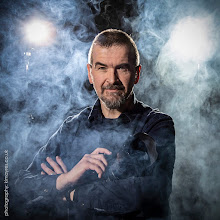Photographing Red Kites
Click. Out of focus.
Click. Over exposed.
Click. Over exposed and out of focus.
Click. Missed again.
Wildlife photography is one of those photographic genres I have never been able to get to grips with.
It's not that I don't enjoy looking at great wildlife photos - I love them - it's just not something I've ever had any success with.
As a portrait photographer, or even fantasy narrative photographer, I interact with my subjects. I can tell them to move here or there, turn this way of that, and work with their ideas about how they wish to be portrayed.
And of course none of this is possible with wild animals.
Instead, you have to be patient. You have to find the right spot to set up in and wait for them to perform the action you wish in the place you want. And if they don't, you go away empty handed.
A few miles along the road from where I live is a Red Kite Feeding Station. Red Kites became extinct in Scotland back in the 19th century, but were reintroduced a couple of decades back. About 10 years ago the Galloway Kite Trail was created as a tourist attraction for the area and the Feeding Station is open to the public every afternoon.
Every time I've driven past it I've thought I should take my camera along at some point. Approximately 80+ birds gather there at 2pm each day so I figured I would have a better than average chance of getting a reasonable shot.
Last Saturday the Red Kite Feeding Station had an open day, so I put the big lens (70-200mm) on the camera and went wandering along.
I have a good camera, a good lens and make my living from photography. How hard could it be?
Extremely hard, it turns out.

You! Yes, you on the right - just hold that position for a few seconds longer. Dammit, are you not listening to me?
Red Kites can move very quickly. By the time you have seen one hovering, lined up the camera and focused, it is long gone.
What I ended up doing was rapid-fire shooting - as soon as I thought I was lined up on anything I held my finger down and fired off half a dozen shots in quick succession.
I wasn't the only person to try this: all along the viewing platform cameras were busy clicking away, creating a near continuous sound not dissimilar to the background noises of jungle scenes in movies. However, for me this approach would lead to me ending up with half a dozen over-exposed, out of focus shots of birds half out of the picture each time.
350 pictures or so later, my best image (by quite a long way) was this:

Randomly caught, lucky bit of back lighting, best shot of 350 clicks - no real skill involved
Whereas, despite it being a different bird and there being no water about, what I'd been hoping for was something more like this:

Photo GJ Wildlife Photography
For the time being, I think I'll stick to photographing people...






Post a Comment